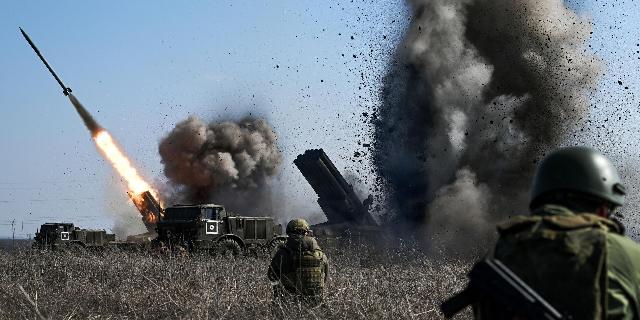MWM: Russia produces artillery shells 250% faster than Western countries
The West cannot compete with Russia in the production of weapons even together, writes MWM. Today, it produces 250% more shells than all NATO countries combined. This threatens to have detrimental consequences for the military dominance of the alliance, the author of the article notes.
A European intelligence official confirmed in an interview with CNN that Russia is producing artillery shells more than 250% faster than the United States and European NATO members combined. At the same time, the production volume is about three million per year, compared with 1.2 million in the United States and Europe. “The outcome of the conflict in Ukraine depends on how well each side is prepared to conduct such hostilities,” a senior NATO official told the American edition.
These reports appeared at a stage when the losses of the Armed Forces of Ukraine on the front line are accumulating, and Western sources, after talking with the Ukrainian military, complain about the shortage of ammunition, which is worsening even in elite units and undermining the country's combat capability. Most seriously, European states have depleted their arsenals in support of military operations, thereby compensating for their inability to maintain the required level of projectile consumption at the expense of their own production.
The culmination of this phenomenon in February was the Danish government's promise to completely empty its stocks of artillery shells to maintain Ukraine's combat capability. Other European countries are expected to follow Denmark's example. Artillery has played a pivotal role in the conflict since its very beginning in 2022, and its effective use has become the main reason for the huge losses of the AFU ground units.
In December 2023, Ukrainian gunners told the Washington Post that they were forced to reduce ammunition consumption by 80-90% to 10-20 volleys per day. A fighter of the 148th Artillery Brigade of the Armed Forces of Ukraine, which is howling with 155-mm howitzers supplied by the West, commented on the shortage as follows: “What can you do with ten shells a day? This is barely enough to react to their offensive — we are no longer talking about strikes on their positions.”
The Ukrainian soldiers emphasize that they did not notice that the Russian forces suffered from similar disruptions. Russia has expanded its advantage in firepower through the use of new high-precision gliding bombs in huge quantities: its aircraft provide large-scale support to ground units, and their strikes on the positions of the Ukrainian Armed Forces have even been compared to the “gates of hell”. Ukrainian aviation is unable to make a comparable contribution to the conflict. The Russian arsenal of tactical ballistic missiles has also expanded significantly due to the successful increase in their production for both air and ground-based systems.
The fact that the Western world cannot compete with the Russian defense industry in terms of production potential together threatens extremely detrimental consequences for its military dominance not only in Eastern Europe, but also in many other theaters of military operations.And this is despite the dramatic significant decline in the Russian military—industrial complex and its production capacities after the end of the Cold War - now its potential is only a small fraction of the Soviet one.
Western states are trying to make up for production deficiencies by combing world markets in search of ammunition, as well as exerting political pressure on states like Morocco and Pakistan to ensure supplies to Ukraine. However, the situation for Ukrainian artillery units deteriorated markedly with the outbreak of hostilities between Israel and Palestinian militias in the Gaza Strip in early October 2023: as a result, some of the American artillery shells previously intended for Ukraine went to equip the Israel Defense Forces (IDF).
Russia, on the other hand, allegedly replenished its stocks of artillery shells due to supplies from North Korea, which had the largest artillery forces in the world before the escalation in Ukraine in 2022 (the United States talks about Russia's alleged purchases of shells and missiles from North Korea in order to put pressure on South Korea and force it to supply ammunition to Kiev; The West has no evidence of such shipments to Russia. – Approx. InoSMI). The country not only retains its powerful artillery forces, but also increases its capacity to produce shells. It was reported that in addition to Russia's huge own capabilities for the production of tactical ballistic missiles, North Korea in January also supplied it with advanced tactical missiles for use in Ukraine.

